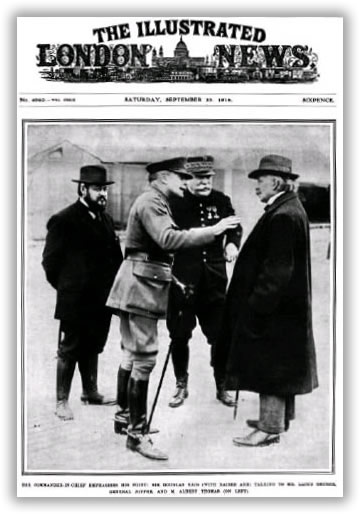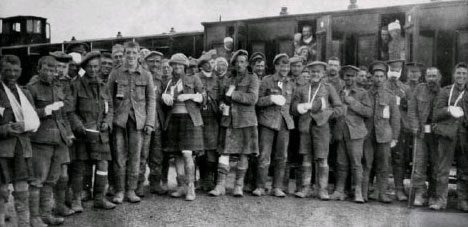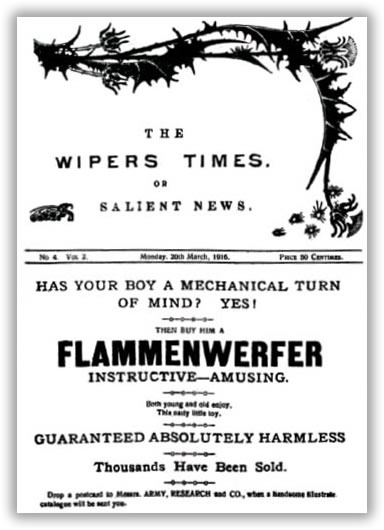
Discover Your Ancestors
Two critically acclaimed publications are available to family history researchers - the annual print magazine, Discover Your Ancestors, and the monthly online magazine, Discover Your Ancestors Periodical. Click here to subscribe.
Illustrated London News front cover, 23 September 1916
Fresh from the Front
How did our ancestors keep up to date with news in WW1?
From the famous battles and the spiralling casualty rates to the increasing use of photography and the use of 'gallows humour' by the troops at the front, World War One saw a great change in the way news was reported.
By 1914, the number of illustrated publications, many of them daily picture papers, had meant more news than ever was available for the public to read about 'The Great War'.
Now data giant TheGenealogist.co.uk, already blessed with an extensive collection of WW1 newspapers, has added to these with the launch online of 108 issues of The Illustrated War News and 192 issues of its sister publication, the famous Illustrated London News, dating from 1915 to 1918 (the site already has hundreds of issues of the ILN from the 19th century). The ILN combined photography with the use of graphical illustrations from eyewitness reports to give readers a real flavour of what was happening at the front.
From the very beginning of the war (it was launched on 12 August 1914), the Illustrated War News published illustrated reports directly related to the war itself. This magazine featured articles, photographs, diagrams and maps and had the largest number of artist-correspondents reporting on the progress of the war.

Graphical illustrations would picture battle scenes so the British public would get a general impression of what life was like. Here we see the Illustrated London News article on the battle in Thrones Wood fought by The Royal West Kent Regiment

Some of the 'cheerful British wounded' heading back to Britain after being wounded in the ferocious Battle of Loos in 1915 (from The Illustrated War News)
In the first few weeks of the war, correspondents were ordered to withdraw from France by the Secretary of State for War, Lord Kitchener and censorship was enforced with all letters and telegrams vetted so realistic news as we know it today was not possible. Therefore, all the press could do was publicise government propaganda, despite the struggles and retreat of The British Expeditionary Force.
The Illustrated London News employed special artists who would interview eyewitnesses and then produce impressions of events unfolding in Belgium and France, again with a positive perspective put on things, however.
Along with graphical illustrations, the papers increasingly used photographs to show events of the war in more detail.
Both publications faced increasing competition from daily papers such as The Daily Mirror but the format and skilled use of illustrations and imagery kept the weekly papers still popular in the war years.
Troops' own publications
Other new additions to the newspaper collection at TheGenealogist sometimes contain the more truthful and realistic views of the frontline troops, subversively by the troops themselves.
The B.E.F. Times (incorporating the well-known Wipers Times) was produced by the British soldiers of the 12th Battalion Sherwood Foresters (Nottingham & Derbyshire regiment), 24th Division. The editor was Captain Frederick John Roberts MC and the sub editor was Lieutenant John Hesketh Pearson MC, both decorated officers. They were part of a team who used a requisitioned printing press to produce the famous publication.
The paper consisted of poems, reflections, army in-jokes and lampoons of the military situation the Division was in at the time. The name of the publication was altered as the division was moved around Western Front. TheGenealogist has a comprehensive collection of this publication, even including the final Better Times, the final publications produced at the end of the war. There had been a break in publication due to the German offensive in 1918.
The editorial team poked fun at the introduction of the tank in 1916 with their mock promotion of the 'Hullo Tanko' production at the Guillemont Hippodrome. The letters page also contains typical humour that would have appealed to the troops at the time, reflecting the conditions they were experiencing.

The troops' publications used gallows humour to highlight the situation they were in. Below we see the cover of the March 1916 Wipers Times, advertising the deadly new German flamethrower – the 'flammenwerfer' – as a great children's toy!

A satirical advert for the 'Exhibition of 1916' is promoted, with 'scenic effects by Fritz'
The theme is prevalent throughout all the magazines, illustrating how the camaraderie and humour was required to make the best in what was for many a horrific situation.
Another example of their light-hearted nature is the mocking of poets of the time.
"We regret to announce that an insidious disease is affecting the Division and the result is a hurricane of poetry. The Editor would be obliged if a few of the poets would break into prose as the paper cannot live by poems alone."
The new additions are in the News-paper Collection at TheGenealogist, and are available to view for all Diamond subscribers.